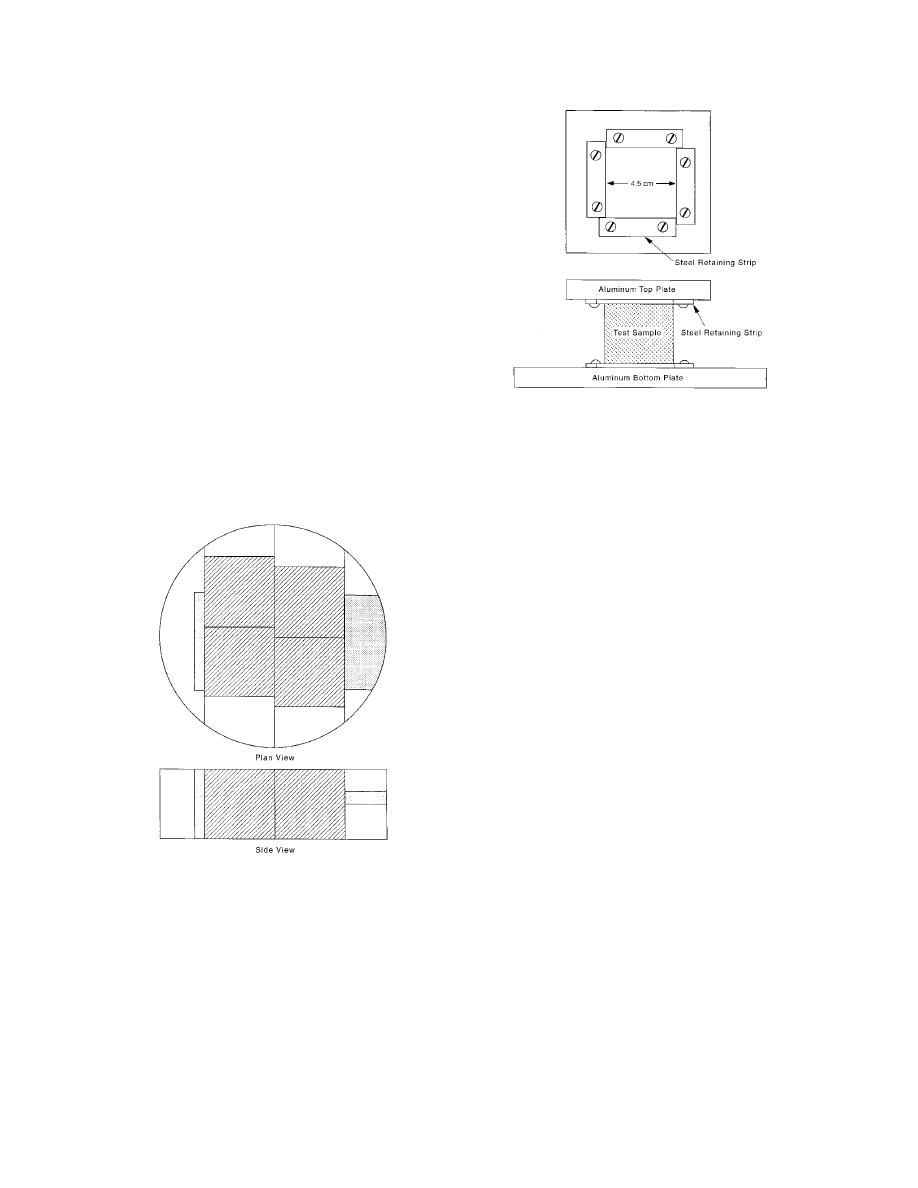
specific ice types and conditions, and general trends
are well known. Our CFG ice was very fine-grained,
equiaxed, isotropic material. The ice was free of
particulates and because the snow from which it was
made was collected from an undisturbed area, we
assume that it had no substantial chemical
Data obtained for all samples tested are given in
Appendix B.
Samples and apparatus
Because the minimum thickness of our bricks was
4.6 cm, we used cubic samples 4.5 cm on a side as our
sample configuration. Four such cubes were cut from
each of two bricks for each set of conditions, resulting
in eight samples for each sample series. The cutting
pattern from each brick is shown in Figure 2.
Figure 3. Platens used for compressive
We also collected bubbly ice from a local pond and
strength tests in this study.
clear ice from Lake Superior to test in parallel with
at about 10C for a few days before they were cut
our brick samples. The pond ice used was taken from
a depth of about 15 cm beneath the ice surface as well
and tested.
as another sample from a depth of about 50 cm. The
The samples were cut using a bandsaw and the cut
faces were ground using sanding screen. The upper
surface was marked with photocopier toner and the test
samples were then returned to their storage temperature
for a day before testing. The 1-day samples were
prepared as soon as they were compacted and stored
for one day in their test configuration. All samples were
tested upside up.
A drawing of the platens we used is shown in Figure
3. The end plates were made of 1/2-in.-thick aluminum,
using the supplied factory finish. They were not
polished or ground. Steel strips about 3 mm thick were
attached to the plates as shown to ensure that the sample
was centered under the head of the press and that the
top plate did not move. The top plate was not attached
to the head, and fitted loosely over the top of the
sample, to minimize stress concentrations caused by
any deviation from parallel of the top and bottom of
the sample. Plastic sheeting was placed between the
sample and both top and bottom platens.
We used an Instron Universal Testing Instrument
(Instron Engineering Corporation) Model TTC
Figure 2. Cutting pattern used in prepar-
overhead press with a rated load of about 10,000
ing samples for use in uniaxial compres-
pounds (about 5000 kg) for the uniaxial unconfined
sive strength testing (hatched areas) and
for crystallographic studies (shaded
compressive tests. The press speed measured without
areas).
load was 0.08 cm/sec. We used a Sensotec Model 41/
572-05 load cell with a range of 05000 pounds (about
15-cm ice was very bubbly and discolored snow ice.
2500 kg). The linear motion transducer was a Lin-R-
The 50-cm ice was less bubbly and discolored and had
Tron Model LRT-S-050B with a range of 02 in. (05
cm) and resolution of 100. The load cell and the
a density of 880 kg/m3. The ice from Lake Superior
was taken from a slab that had washed up onto the
motion transducer readings were recorded in computer
shore. It was very clear and clean and had a density of
files, giving us time (in increments of 0.43 s), load (in
920. All of these samples were stored in the coldroom
pounds) and displacement (in inches). These data were
4



 Previous Page
Previous Page
